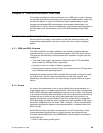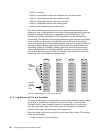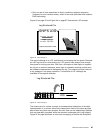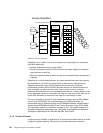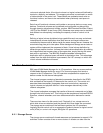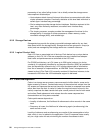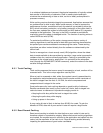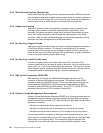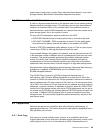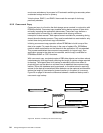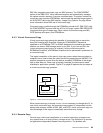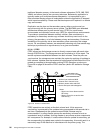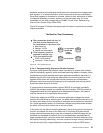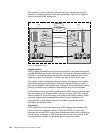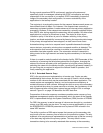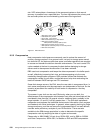
Disk Environment Overview 93
allows them a longer stay in cache. Other data sets should be set in may cache
Storage Classes, defined with intermediate response time values.
9.4 Paths and Bandwidth Evolution
A path is a logical concept that lies on the physical web of links (cables) existing
between hosts and storage servers. This topology can be highly diversified and
complex. An important factor of this interface layer is the potential number of
parallel activities a specific DB2 subsystem on a specific host can sustain with a
given storage server: this is the
number of paths.
For any host-LCU association, paths are defined in the IOCP:
• CHPID PATH defines the set of host physical links or channels to be used.
• CNTLUNIT CUNUMBR...PATH enumerates, for each LCU the usable paths
from previous set (please note that the name is not related to the SSID).
Similarly, CESTPATH establishes paths between a pair of LCUs for
peer-to-peer
remote copy (PPRC)
by defining the physical links to be used.
The bandwidth between two nodes in the network, such as the host and the LCU,
is the maximum number of MB/sec that can instantaneously flow from one node
to another. The actual bandwidth represents the possible sustained transfer
activity. At building time, Storage Groups should be designed with pathing
considerations to control the potential parallel access they offer to allocations,
specifically when several control units are merged in a large disk storage server.
Sequential data striping exploits this parallel topology. Sequential data striping is
provided as a capability of DFSMS/MVS and it is available only for
DFSMS-managed data sets.
The
OS/390 Fiber Connection (FICON) Architecture improves from 17
half-duplex to 100 full-duplex MB/sec bandwidth on a physical link. While the
number of CHPIDs per channel is still 256 per processor, likewise the number of
device addresses per LCU also remains at 256, there is a 16-fold increase (from
16 to 256) in the number of LCUs a physical link can address (and thus in device
addresses, or device numbers). A statement of direction exists for S/390 FICON
control units. Disk storage servers with native FICON attachments are not yet on
the market, but FICON links can already attach to ESCON Directors and split into
up to eight 17 MB/sec ESCON physical links to reach unmodified current disk
storage servers. So path parallel capabilities should dramatically improve in the
next several years.
9.5 Capabilities
Most disk storage server capabilities deal with availability, performance, or
sparing space resource. This section reviews the most popular capabilities from a
DB2 utilization point of view.
9.5.1 Dual Copy
Dual copy of a volume (called primary volume) is an availability option that
triggers duplication of any write onto a shadow volume (
secondary volume)ofthe
same physical control unit. It is also referred as RAID 1 because there is a



